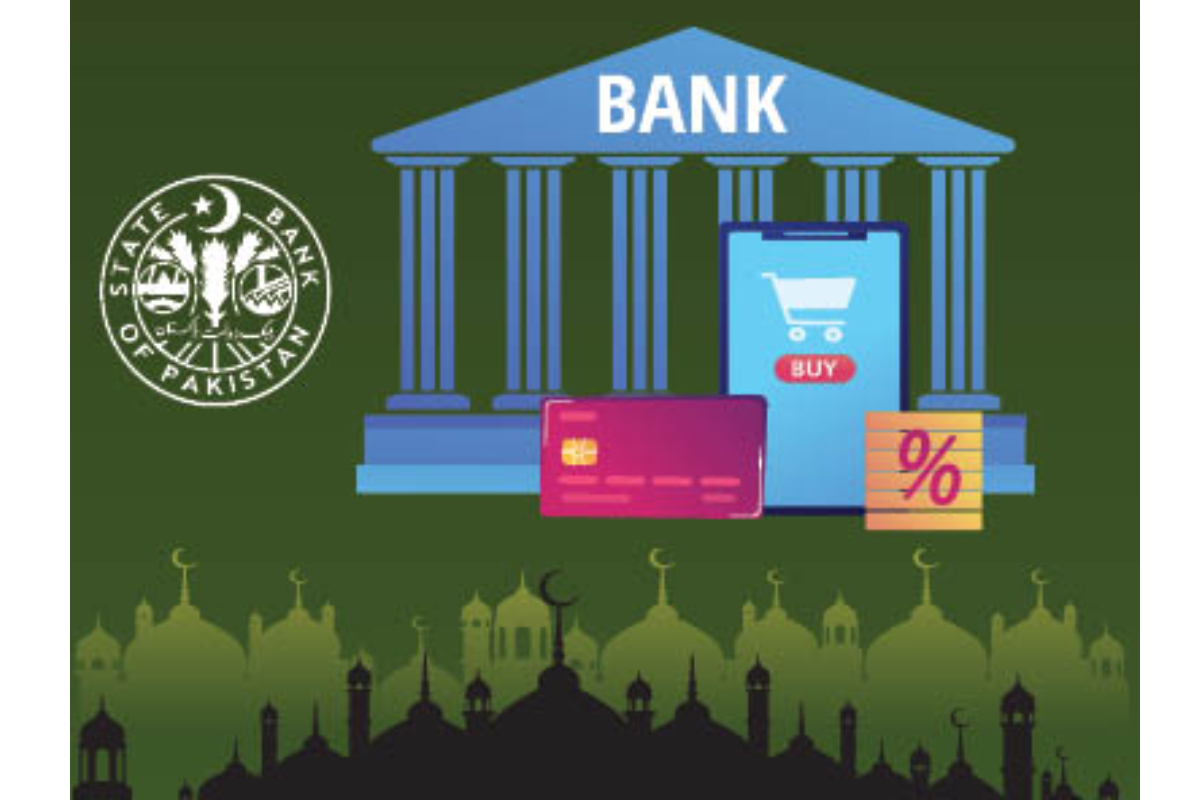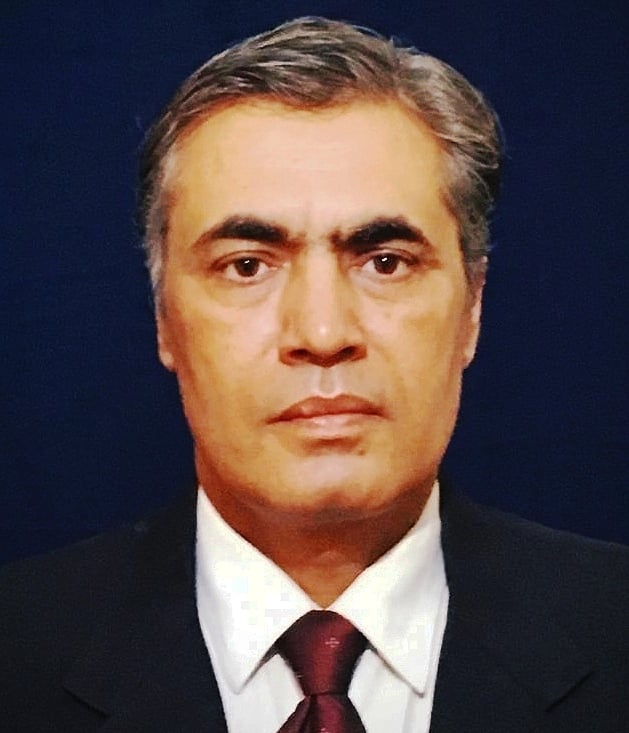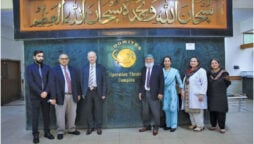
Islamic banks post 72% growth in profit: SBP
The profitability of the Islamic banking institutions (IBI) before the tax payment surged 72 per cent to Rs73.4 billion by the end of June 30, 2022, compared with Rs42.6 billion in the same period of the last year, the State Bank of Pakistan (SBP) said.
The earnings ratio like return on assets (ROA) and return on equity (ROE) (before tax) were recorded at 2.4 per cent and 42.6 per cent, respectively, by the end of June 2022.
The operating expense to gross income ratio of IBI improved during the period under review and was registered at 46.4 per cent by the end of June 2022.
The assets of the Islamic banking institutions witnessed an all-time high quarterly increase of Rs836 billion during the quarter April to June 2022 and reached Rs6.781 trillion by the end of June 2022.
The growth in assets emanated from net investments and financing, which exhibited a quarterly rise of Rs470 billion and Rs269 billion, respectively.
On the funding side, the IBI deposits also posted the largest quarterly leap of Rs610 billion during the period under review and were registered at Rs4.856 trillion by the end of June 2022.
On a year on year (YoY) basis, the assets and deposits of went up by 41.4 per cent (Rs1.984 trillion) and 27.1 per cent (Rs1.034 trillion), respectively, by the end of June 2022.
The market share of the Islamic banking assets and deposits in the overall banking industry stood at 19.5 per cent and 20.5 per cent, respectively, during the period under review.
While, the market share of financing of IBI in advances of the overall banking industry increased to 27.2 per cent as against 24 per cent as of June 2021.
The composition of IBI remained the same with 22 Islamic banking institutions, including five full-fledged Islamic banks and 17 conventional banks having Islamic banking branches.
During the period under review, 103 branches were added to the branch network of IBI. Correspondingly, the branch network was recorded at 4,086 (spread across 129 districts of the country) by the end of June 2022.
The number of Islamic banking windows (dedicated counters at conventional branches) operated by the IBBs also increased by 45 per cent during the period under review and was recorded at 1,463 by the end of June 2022.
The SBP said the IBI’s assets have seen a strong growing trend over the years. This rising path also sustained during the period under review and the assets of the IBI reflected double-digit growth of 14.1 per cent.
In terms of amount, the asset base of IBI enlarged by Rs836 billion and was recorded at Rs6.781 trillion by the end of June 2022.
This is biggest-ever increase in the assets’ size of IBI in a single quarter. The aforesaid growth in assets was mainly due to the investments (net), which showed a quarterly rise of Rs470 billion (21.4 per cent).
Besides, financing (net) of IBI also went up Rs269 billion (10 per cent) during the period under review. The share of investments (net) and financing (net) in the total assets were registered at 44 per cent and 39 per cent, respectively.
The market share of IBI’s assets in the overall banking assets stood at 19.5 per cent by the end of June 2022.
The breakup of assets among IBs and IBBs shows that the assets of IBs witnessed a rise of Rs467 billion (14.3 per cent) during the period under review and were registered at Rs3.737 trillion by the end of June 2022.
Likewise, the assets of IBBs experienced a quarterly increase of Rs369 billion (13.8 per cent) to reach Rs3.044 trillion by the end of June 2022.
In terms of the share, IBs and IBBs accounted for 55 per cent and 45 per cent, respectively, in the overall assets of IBI.
Investments (net) of IBI reflected a sizeable growth of Rs470 billion (21.4 per cent) during the period under review and touched Rs2.672 trillion during the period under review.
The main reason behind this increase was the deployment of funds by IBI in the government of Pakistan domestic Ijarah Sukuk (GIS). The government issued seven GIS, amounting to Rs504 billion during the period under review.
The review of investments (net) portfolio of IBs and IBBs shows that the investments of IBs were raised by Rs364 billion (29.3 per cent) during the period under review and were registered at Rs1.608 trillion by the end of June 2022, while, investments of IBBs expanded by Rs106 billion (11.1 per cent) to reach Rs1.064 trillion.
The share of IBs and IBBs in the overall investments of IBI stood at 60.2 per cent and 39.8 per cent, respectively.
During the period under review, the financing and related assets (net) of IBI recorded a healthy increase of Rs269 billion (10 per cent) and were recorded at Rs2.961 trillion.
Bifurcation of financing and related assets (net) among IBs and IBBs divulges that financing and related assets (net) of IBs witnessed an increase of Rs125 billion (9.1 per cent) during the period under review and stood at Rs1.494 trillion by the end of June 2022.
In contrast, the financing portfolio of IBBs grew Rs144 billion (10.9 per cent) to reach Rs1.467 trillion. The share of IBs and IBBs in the overall financing of IBI was registered at 50.4 per cent and 49.6 per cent, respectively.
As a result of constant growth, the market share of the IBI financing in advances of the overall banking industry increased to 27.2 per cent by the end of June 2022.
In terms of mode-wise financing, the share of diminishing Musharaka (33.9 per cent) remained dominant in the overall financing of IBI; followed by Musharaka (22.9 per cent) and Murabaha (15.6 per cent).
The review of the sector-wise breakup of financing shows that textiles (15.7 per cent), agri business (13.5 per cent) and production and transmission of energy (11.5 per cent) were the three major sectors in terms of their share in the overall financing of IBI.
The review of client-wise financing portfolio depicts that the share of corporate sector (68 per cent) was the highest in the overall financing of IBI; followed by the commodity financing (16.8 per cent) and consumer finance (10.9 per cent).
Besides, the share of the Small and Medium Enterprises (SMEs) and agriculture financing remained low, compared with the overall banking industry’s share in financing to these sectors.
The key indicators of asset quality, including non-performing finances (NPFs) to financing (gross) and net NPFs to net financing, were recorded at 2.6 per cent and 0.3 per cent, respectively.
Like previous quarters, these ratios remained relatively better than those of the overall banking industry averages.
The IBI deposit base has been consistently rising with significant pace over the years. During the period under review, these deposits reported a double-digit growth of 14.4 per cent.
In terms of size, the IBI deposits revealed a quarterly rise of Rs610 billion and were registered at Rs4.856 trillion by the end of June 2022. As a result, the market share of IBI’s deposits in the overall banking industry deposits increased to 20.5 per cent, compared with 20 per cent in the previous quarter.
Catch all the Economic Pulse News, Breaking News Event and Latest News Updates on The BOL News
Download The BOL News App to get the Daily News Update & Live News.








 Read the complete story text.
Read the complete story text. Listen to audio of the story.
Listen to audio of the story.